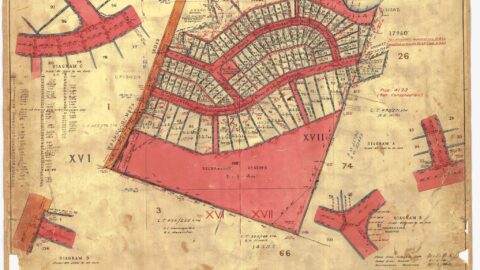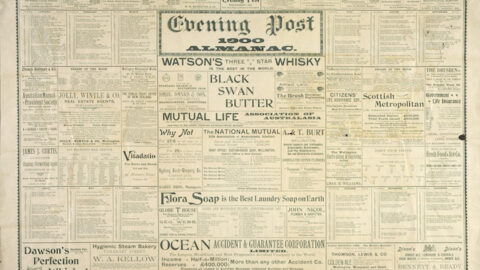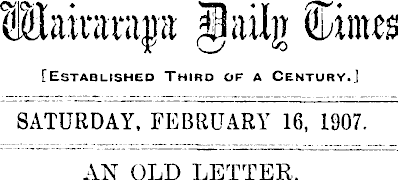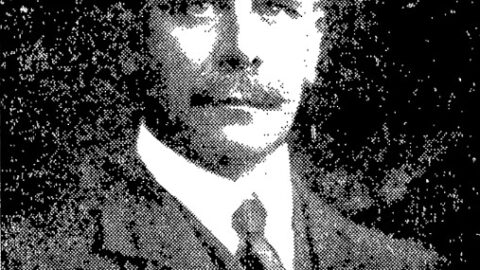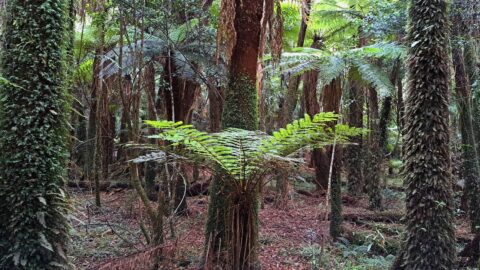The Wainui-o-mata Water Supply.
MR. HIGGINSON’S REPORT.
The report of Mr H. P. Higginson upon the Wellington water supply was circulated to-day.
We make the following extract from it:
DESIGN.
The general principle of the scheme appears to have been well considered and suitable. The summer flow of the river was probably ascertained to be in excess of anticipated consumption for many years to come, consequently no storage was provided. Many details of the scheme require alteration, though the general design is suitable and well considered.
WAINUI STREAM AS A SOURCE OF SUPPLY.
When visiting the reservoir upon the 21st instant, with the City Surveyor, I found the river very low indeed. A very good gauge board had been erected by Mr Loughrey’s orders, and from measurements that I then made I found the flow to be 3,095,000 gallons per diem, which is equal to a supply of 119 gallons per head for the present population.
RATE OF SUPPLY PER HEAD.
The average rate of supply per head of population in England is stated to be 30 gallons for all purposes. For Wellington, which in common with many other colonial towns enjoys a gravitation supply at high pressure, I consider that a larger provision per head should be made. The legitimate consumption of water per head is steadily increasing in English towns, owing to the more general use of water-closets, baths, and water for gardens, etc.
I consider that for domestic purposes, and street and garden watering, 40 gallons per head is an ample supply, not including that supplied to the trade by meter. This would be the average per diem. The maximum demand would be double this, or 80 gallons, which, being taken during the day, would govern both the consumption and the pressure, and is the amount with which I shall deal. Strict regulations must, however, be enforced to maintain it at that rate.
OPINION OF CONSTRUCTION AND CLASS OF WORK.
During my visit on the 21st instant, I had little opportunity of examining the reservoir works or the interior of the race, owing to both being partly full of water. As I have before mentioned, I consider the shutter of the scouring sluice to be unfit for the work, judging from the description of its construction given to me. I, of course, could not examine it personally, and no drawings of it seem to exist in the office.
Several of those portions of the race which had leaked so badly were opened up for my inspection. I found that the loss of water had been much reduced by caulking the exterior with sacking and cementing the interior, which was the best thing that could be done within so short a time.
Upon examination of the whole line of the race, I found that leakage exists more or less throughout. In many cases what seemed to be a large leak was an accumulation of smaller ones.
In two places where the race had been carried across an embankment, the settlement of the ground had been followed by the invert of the race, leaving the sidewalls and arch in their original position. This action, of course, left a wide crack upon both sides, which must have allowed a large quantity of water to escape; and the only wonder is that no more serious damage ensued.
There is no use in my enumerating all the cracks and leaks that I was shown; they were, however, very numerous, and the means of allowing a large quantity of water to escape, in most cases through the loose stony ground, and only appearing in places upon the surface.
I think that most of the leaking occurs between the invert and the side-walls. The invert was first constructed, after which the side-walls were raised upon it. It seems that before building the walls the old work was not cleaned or properly cleared from clay and other dirt, which would naturally collect upon it. The result has been that the clay and dirt has been washed out, leaving crevices at A – A on the sketch.
The concrete is described to me as being of a varying description in the interior, in some places being apparently good, and keeping a good surface; in others more or less worn rough and into holes. I could not examine the interior, but what I saw of the exterior seemed generally of good quality.
In a work of this description, it is impossible to supervise every shovelful of concrete that is mixed; should any scamping have taken place, it would probably occur in patches, and no cursory examination can enable me to decide such a question.
From what I learn, and what I saw, I am of opinion that the damage to the race has been the result of careless treatment and work badly put together, and not so much from bad material. The leaks, to a great extent, are the result of a bad junction between invert and side-walls, and also in consequence of the workmen neglecting to remove the upper portion of the invert beneath the side-walls that had probably been disturbed by the men walking upon it. All loose portions of concrete so disturbed are no better than loose gravel, and would not afterwards set so as to be even approximately watertight.
The damage to the bottom of the race has, I am confident, been principally caused in the same manner — viz., by the men making a highway of it with hob-nailed boots, before it was properly set. The whole of the loose portions and pebbles would be soon washed out, and rolled along by the water, which has a velocity when running full to the springing of 3½ feet per second.
Cracks probably occur in places owing to settlement of the ground, and, considering the amount of leakage, the only wonder is that no serious slip has taken place.
There are not sufficient man-holes left. Before commencing repairs, these should be made at most two chains apart.
ALTERATIONS AND ADDITIONS RECOMMENDED.
I should advise connection by telephone with both Wainui and Karori to be at once established. Instant communication will be of the greatest value. Had it now existed with Wainui it would have been the means of greatly economising the gradually failing supply.
I recommend that so soon as the 12-inch main is laid to Karori, and properly tested, that the Wainui service should be cut off, in order to effect repairs to the race and other works. The most suitable time should be chosen, and all preparations made beforehand to complete the works as rapidly as possible.
Race Repairs
The repairs to this are the most important, and will require the longest time to execute. If divided into lengths, and numerous man-holes cut, and all material provided beforehand, it might be completed in a fortnight or three weeks.
I do not advise that the whole interior be rendered with cement, as I do not think it could be made to adhere to the present surface, unless all picked over and the skin removed.
The better plan, in my opinion, would be to properly repair all cracks and crevices, and fill up irregularities and holes — this would arrest all major leaks. The minor leaks, which exist throughout the whole length more or less, could, in my opinion, be best arrested by excavating the present rocky filling upon each side of the walls (where not solid rock) for a width of about 15 or 18 inches, and refilling the trench with well puddled stiff clay of the right sort. This would be better calculated to arrest leakage than any cement work inside, which, unless very carefully done, would flake off again.
It is a well-known fact that no ordinary concrete of reasonable thickness is watertight, and that any concrete wall used for retaining water is always backed by clay puddle.
The puddle work suggested could be commenced at any time, and done by degrees, and the cementing and repairs to the interior when the water was turned off.
The Petone valve, supposed to be self-acting, is reported not to work. As in case it should work, I consider that it is dangerous for the pipes, I advise its removal at the first opportunity.
MEASURES FOR CHECKING WASTE.
A simple method of ascertaining the waste is to convey an ordinary meter of the necessary size, with two lengths of hose and hydrants, in a waggon or hand-cart to the place required.
By attaching the hoses to hydrants on either side of a stop-valve, with the meter between, and then closing the valve in the main pipe, the water is all passed through the meter. A very short observation will tell whether the flow is more or less than it should be. Of course, the district under observation must be disconnected from all supply except through the main to which the meter is attached.
This is the method I should at present recommend for ascertaining the consumption between 1 and 5 a.m., and from the result discover the probable loss from leakage.
KARORI SUPPLY.
I understand that this reservoir has been connected temporarily, but should advise that the new 12-inch mains be laid and tested, before depending upon it for supplying the town while repairs are made to the Wainui works.
The pressure will reach 195 lbs per square inch, and as none of the pipes were designed to stand so much, it is only reasonable to expect numerous bursts.
I certainly think that the telephone wire should be constructed to this reservoir before turning on the supply, so that the night pressure might be regulated by the quantity turned on, as it is only at night that the pressure will rise so high as to be dangerous.
I consider that this supply, in conjunction with the Wainui, should be sufficient for the city for many years, if properly managed. For the greater part of the year an abundance of water runs to waste over the Wainui by-wash, and it is only during the summer months that any failure in the supply is likely to occur, even during such a season as the last, when nearly 120 gallons per head per diem was yielded by the stream at its lowest.
PLANS.
I strongly advise that the plans in the City Surveyor’s office should be finished. The works, as constructed, are not anywhere recorded.
Tags: Newspaper Water Race Waterworks
